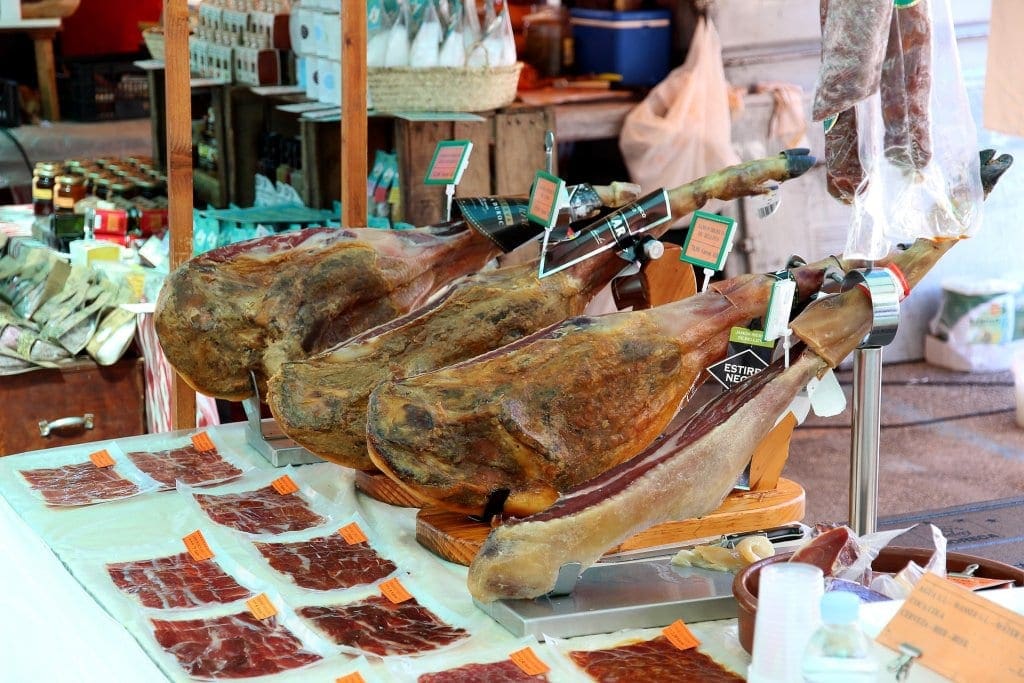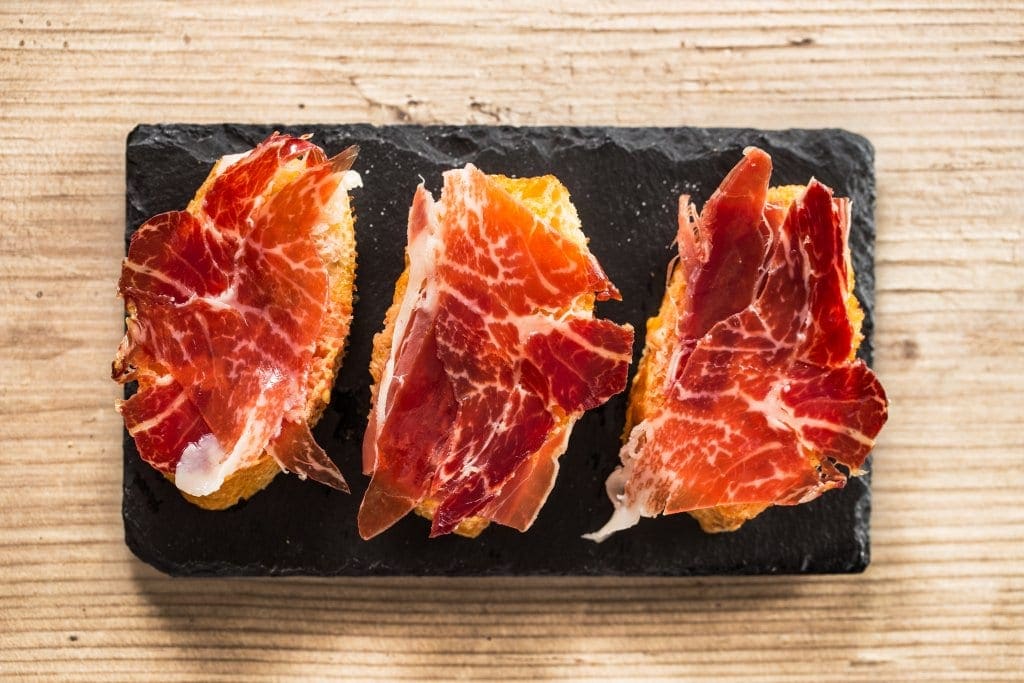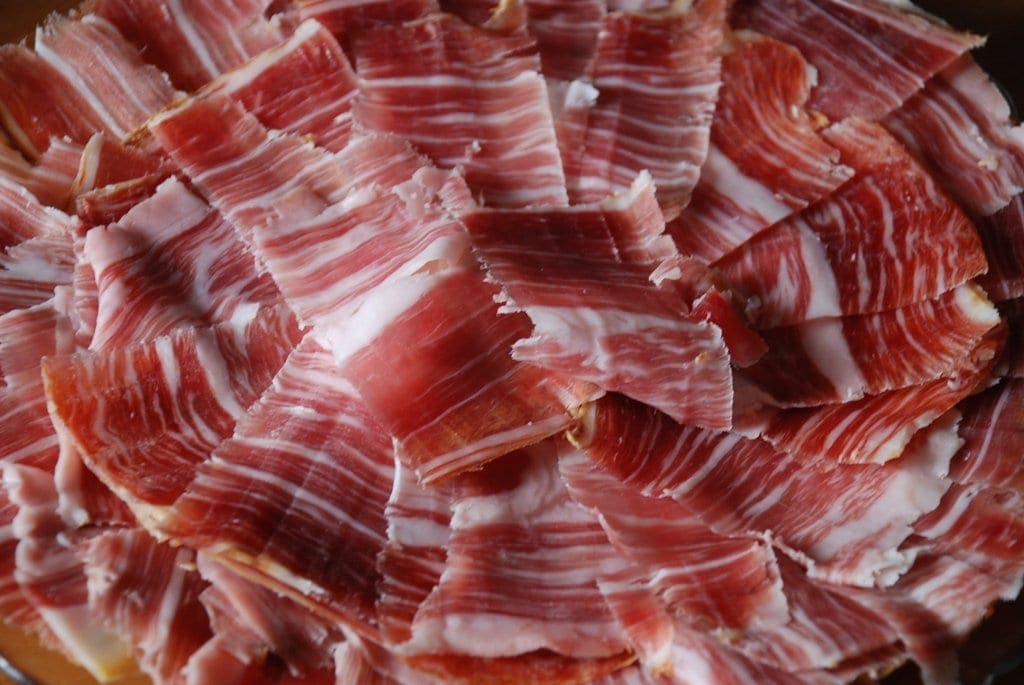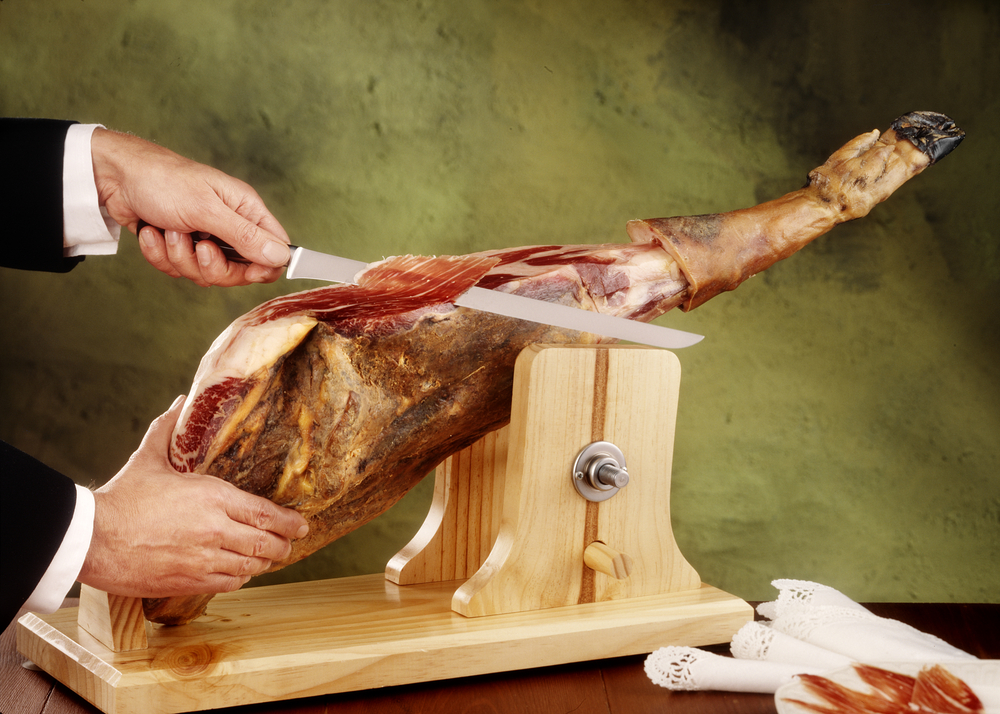
The Cuisine of La Rioja: One of Spain’s Best Wine Producing Regions
January 20, 2022
Unlock the Secrets of La Rioja's Gastronomy: Savor Delectable Tapas & Exquisite Wine Pairings. Plan Your Unforgettable Food Adventure Today!
Estimated reading time: 10 minutes
Ham has been a fundamental element of Spanish gastronomy and culture for centuries. Its origins trace back to the pre-Roman populations on the Iberian Peninsula, with the Phoenicians playing a pivotal role in introducing pigs to Spain. Romans documented the first accounts of Iberian ham production during their reign, elevating ham’s status with esteemed varieties from Pamplona, Teruel, and Tarragona. The trade’s significance prompted the minting of ham-shaped coins. Under Muslim rule, pork consumption declined, but during the Reconquest, eating pork became a symbol of Christianity, and hanging hams in prominent places became popular. Monasteries preserved culinary traditions through the Middle Ages and pig breeding and ham production flourished. The history of the modern meat industry began in the Napoleonic era, with significant advancements in the 20th century. Today, ham continues to evolve and is revered in Spanish gastronomy and worldwide.
It has emerged from its humble origins as a rural peasant tradition to become a highly prized item for connoisseurs of Spanish cuisine and all classes of Spanish society. Jamón Ibérico, meticulously crafted from a unique breed of Iberian pigs, has garnered global acclaim for its exquisite flavor, rightfully placing it at the pinnacle of cured hams. Select tapas bars across the country serve it, making it the undisputed champion of Spanish gastronomy at its finest. Its beauty lies in its simplicity – a soft, silky-textured ham with a deliciously sweet flavor and aroma.

Andalusia’s mountains are renowned for producing some of the finest Jamón Ibérico, though this esteemed delicacy is also crafted in other regions across Spain. While Jamón Ibérico rightfully holds a prestigious position in Spain’s culinary heritage, it is just one facet, not the entirety, of the country’s rich jamón culture. Several different categories and specialties of Jamón exist, the finest examples demanding impressive prices, short supply, and high demand!
Since the Antiquities, people have recognized the health properties of cured ham. Hippocrates himself recommended patients to “eat more ham.” Oleic acid is the main fat component in cured hams, a “Good Cholesterol” compound also found in Olive Oil. In Southern Europe, small but regular (almost daily) amounts of ham form part of the Mediterranean Diet.
While Italian Prosciutto and other hams are well known outside of Italy, Spanish “Jamón” (artisan cured hams) is an expensive delicacy that has been a relatively recent best-kept secret in Spain. However, the secret is out, and Jamón is increasingly treasured by foodies worldwide. There are two main categories of Jamón- the Iberian Ham (Jamón Ibérico) and Mountain Ham (Jamón Serrano). Both are cured hams made by salting (with Sal de Mar). Then hung to dry in cellars with natural ventilation for over a year. Serrano is usually aged for a year and a half, while the much more exclusive and expensive Ibérico is aged up to 3 years. Jamón Ibérico represents a fraction of Spain’s ham production and has different subcategories of ultra-high-quality sublime hams.
There are five broad categories of cured ham available in Spain today. They are at least partly differentiated according to the breed of pig used in their production.

Jamón Ibérico is the most prized type of Spanish ham. It is produced exclusively from a variety of Iberian pig breeds, including the famous Black Iberian pig ‘Pata Negra,’ which ranges freely in sparse oak forest (Dehesa) reserves in southwest Spain. These pigs graze on the acorns from oak trees found in the Dehesas. Jamón Ibérico is further classified into several categories based on the pigs’ diet and the percentage of Iberian breed in the pigs, and aged anywhere between two and five years:
This is the most common ham, made from the meat of the white and/or non-Spanish breed of pig. However, the name Serrano refers explicitly to the cut of the ham rather than a breed used to produce the tasty Jamón. The best example is salt-cured ham, which is dried in the mountain (Serrano) air. This can be a delicious, cheaper alternative to the more expensive Jamón Ibérico. The Consorcio Serrano is the association that guarantees the quality and production methods of producers in Spain. It is produced as follows:
Teruel Jamón is a variety of Serano ham produced from white pigs, specifically a crossbreed of Landrace (standard or white) sows and Duroc boars, reared in Teruel, Aragón. Located in eastern Spain, Teruel experiences a continental climate with Mediterranean influences. Long, cold winters, dry conditions, and frequent clear days characterize the region. These pigs are fed on local cereals. After salting, the hams are hung in controlled rooms and natural drying sheds before being transferred to cellars for maturation under natural atmospheric conditions. Aged for at least 14 months, these hams are distinguished by their delicate, lightly salted flavor and smooth, pleasant aroma.
Jamón de Trévelez, another variety of Serano ham, is exclusively made from crossbred of a Landrace sow and Duroc-Jersey boar, raised in the area surrounding the village of Trevelez, situated in the high Alpujarras region of the Sierra Nevada. These pigs are raised on a diet consisting primarily of vegetable feeds. The ham is produced using the highest quality legs, specifically selected for their soft, fatty meat. Due to the high elevation, less salt is required in curing the ham, and the drying and aging processes are carried out naturally using traditional methods. The long, natural curing process, extending over 14 months, helps to release the ham’s distinctive aromas and flavors.

Guijuelo Jamón is a protected designation of origin in the southeast of the Salamanca province in Castile-Leon. Although the ham is produced from boars, which may not be 100% purebred, it is still held in high regard in Spain. The animals may originate from several regions across Spain, including Andalucia, Extremadura, and Huelva regions. Still, the hams must have been cured and aged in the province to qualify as Guijuelo hams. Over 70 towns and villages in the region have the right to produce this succulent, flavorsome Jamón, which can be classified as Ibérico or the superior de Bellota, depending on the pig’s diet.
Like other high-quality Jamón, the Guijuelo curing and aging process can last three years, in contrast to the much shorter period for the standard Serrano ham. The resulting product is sublime – Guijelo Jamón is renowned for its juicy, tender texture and strong, almost overpowering flavor. It is also admired for its relatively low salt content compared to other quality Spanish hams – a benefit of Guijuleo’s arid climatic conditions, which allow for a much shorter curing process than in other parts of Spain.

The ham leg (and hoof) is placed into a”jamonero,” a base that sits on the counter (seen in virtually all good bars and restaurants in Spain, as well as private homes). Then, the real art form is the slicing of the ham. It must be done by hand with an extra sharp knife and sliced as thinly as possible. The art of cutting ham is seen in Spain as serious as the art of cooking or wine, and “ham slicer” are as highly regarded as top sommeliers. Spain Gourmet magazine recently published a fascinating article about the “Ham Slicer Extraordinair” world champion Florencio Sanchidrián, who has sliced for dignitaries and celebrities as varied as Robert Dinero, Pope John Paul II, and of course, the King of Spain, Juan Carlos- a well-known gourmet and lover of the”Buena Vida” (the good life).
When selecting a wine to accompany jamon, consider the type of jamon: Jamon Serrano pairs well with light, fruity wines like Tempranillo or Grenache. For the more affluent, more intense Jamon Iberico, aged reds such as Rioja or Ribera del Duero are excellent choices. The key is to balance the saltiness and richness of the ham with the wine’s acidity and body. White wines like Albariño or Fino Sherry can complement jamon, offering a refreshing contrast. Or have you ever considered Cava or even Rosé? The perfect pairing enhances the jamon and wine flavors, creating a memorable gastronomic experience.
A Riojan institution, this long-standing tapas bar in Logroño serves only the finest Jamón Ibérico, accompanied by a wide selection of Riojan wines.
Website: Bodegon El Refugio
This chain of Jamón tapas bars in Madrid has an enormous selection of hams, from the basic range to the ultra-expensive and delicious Ibérico de Bellota.
Website: www.museodeljamon.com
Off the beaten track, this unassuming, blink, and you’ll walk past it tapas bar in Madrid offers delicious Jamón at reasonable prices and, crucially, doesn’t attract hoards of tourists!
Seville is packed with tapas bars, but La Flor stands out due to its wide selection of hams, reasonable pricing, and a fantastic selection of wines by the glass.
The Jamón supremo of Seville, Jotas, is where to pig out on sublime Jabugo Ibérico ham. Worth every cent!
Website: www.restaurantescincojotas.com
If you would like us to customize an exclusive luxury tour, contact us and let us know your travel plans. We offer luxury food and wine tours for private groups of a mininium two guests. In addition, all of our private, chauffeured tours are available year-round upon request.

